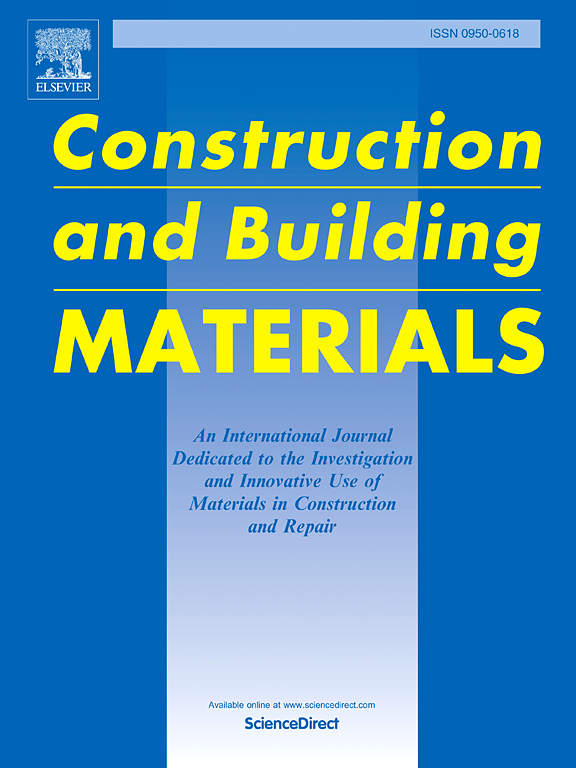Piezoresistivity assessment of self-sensing asphalt-based pavements with machine learning algorithm
IF 7.4
1区 工程技术
Q1 CONSTRUCTION & BUILDING TECHNOLOGY
引用次数: 0
Abstract
Due to its fast-curing process, asphalt binder has been increasingly used to replace conventional cementitious materials and to produce asphalt-based self-sensing sensors (ASS). The asphalt mixture does not require consideration of curing age, as asphalt-based samples can be cured at room temperature. This is because the asphalt binder transitions from a Newtonian liquid to a solid state upon cooling. The relationship between strain and electrical response is one of the factors that influences the self-sensing performance. In this study, four-electrode method was applied to ASS and 10 V of applied voltage was used to measure the piezoresistivity. The percolation thresholds of ASS, in the range of 0.5–1.0 wt%, was found based on study results. In order to analyse the strain of ASS, digital image correlation (DIC) method was applied, and the cyclic loading process was used to simulate the practical pavement situation. Furthermore, to enable the application of ASS and enhance the efficiency of the self-sensing system, a machine learning approach was applied in this study to establish the relationship between strain changes and the electrical response of ASS. The trained algorithm, exhibiting a high determination coefficient (reached 0.965), can be utilized to predict strain changes in self-sensing sensors based on fractional resistance changes. Artificial intelligence significantly enhanced the application potential of self-sensing sensors.
求助全文
约1分钟内获得全文
求助全文
来源期刊

Construction and Building Materials
工程技术-材料科学:综合
CiteScore
13.80
自引率
21.60%
发文量
3632
审稿时长
82 days
期刊介绍:
Construction and Building Materials offers an international platform for sharing innovative and original research and development in the realm of construction and building materials, along with their practical applications in new projects and repair practices. The journal publishes a diverse array of pioneering research and application papers, detailing laboratory investigations and, to a limited extent, numerical analyses or reports on full-scale projects. Multi-part papers are discouraged.
Additionally, Construction and Building Materials features comprehensive case studies and insightful review articles that contribute to new insights in the field. Our focus is on papers related to construction materials, excluding those on structural engineering, geotechnics, and unbound highway layers. Covered materials and technologies encompass cement, concrete reinforcement, bricks and mortars, additives, corrosion technology, ceramics, timber, steel, polymers, glass fibers, recycled materials, bamboo, rammed earth, non-conventional building materials, bituminous materials, and applications in railway materials.
 求助内容:
求助内容: 应助结果提醒方式:
应助结果提醒方式:


